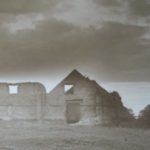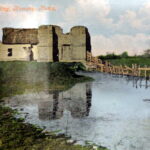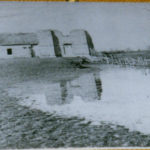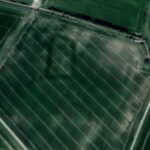The Biggin
Below are photos all showing the same Malting building that belonged to Ramsey Abbey
The Grange
In the early part of the 14th Century Biggin Lane was called ‘Le Byggynway’ and led to the moated grange of Ramsey Abbey called the Biggin, which may have once been used as a leper house. The Manor is mentioned in 1286 and the name is derived from the word ‘Biggin’ which simply means ‘The Building’. Sometime before 1352 the Biggin had become a grange supplying Ramsey Abbey with produce such as milk, butter, cheese and bacon whilst its garden supplied the Abbey guest house with fruit and vegetables. By 1439 Biggin had evidently become a very pleasant place for the Abbot and monks. At the visitation of Bishop Alnwick it was reported that the monks had their midday meal with the Abbot at Biggin and then went onto Bury to spend their time with the Almoner ‘in drinking feasting and other irregular doings until midnight’.
At the Dissolution, Biggin House was granted to Sir Richard Cromwell and remained in the hands of the Cromwells for many years and their names can still be read in the Parish Registers of St Thomas a Becket Church.
The Malting
The house was demolished in about 1757 and all that remained was a long range of out-buildings called the Malting, sited to the north west of the house. The building was of two storeys and built of yellow brick with red brick dressings. It was probably built in the 16th century and was about 55 metres long running east and west, with a shorter range running southwards at the east end. There is also some indication that there may have been other buildings further west on the same side. A door with the initials H.C. (Henry Cromwell) carved on it, was taken to Ramsey Abbey where it was used as a door to the cellar. Eventually the door was removed to Anglesey Abbey where it can be seen today.
The Malting was finally demolished during the Second World War, when the runways of Upwood airfield were extended to enable heavy bombers, such as the Halifax, to operate.




